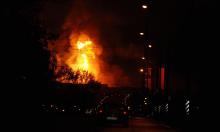Russian Academy Of Sciences Holds General Assembly In Moscow
On Monday members of the Russian Academy of Sciences convened for a general assembly to last till November 17. The agenda includes electing the President and administration staff. The elections are held every five years. The Russian academe and media aroused a wide discussion over possible candidates for the Academy of Sciences' President, naming, in particular, the incumbent President academician Yury Osipov, a well-known mathematician; Jores Alfyorov, 2000 Nobel Prize laureate in physics; physicist Vladimir Fortov and Yevgeny Velikhov, a major expert in nuclear physics, and others. On November 8, just before the general assembly, President Putin signed the long-awaited decree establishing the Presidential Council for Science and High Technologies. The Russian Academy of Sciences (till May, 1917 - the St.Petersburg Imperial Academy of Sciences, from 1925 to 1991 - the USSR Academy of Sciences) was founded in 1724 by Peter the Great's initiative. The tradition of electing the President by ballot voting at the general assembly dates back to 1724 (previously the Academy's presidents were state-appointed). This tradition has not been broken ever since. The candidate who received at least 50% of vote is elected President. Peter's idea was to make the Academy the main source of science in Russia. Indeed, it has fulfilled this mission throughout the years of its existence, becoming (unlike foreign Academies) an important state institution. By January 1, 2001 the Russian Academy of Sciences' framework consisted of 454 scientific organisations (including 357 institutions) with around 60,000 scholars working in them, including 494 academicians and 713 corresponding members, over 9,000 doctors and almost 27,000 candidates.
Subscribe to Pravda.Ru Telegram channel, Facebook, RSS!





